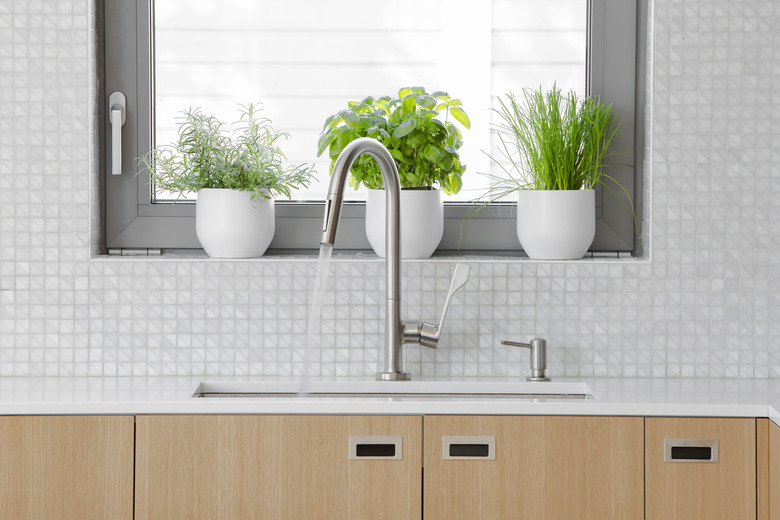Why Does My Faucet Lever Keep Dropping?
We may receive a commission on purchases made from links.
If you have a single handle kitchen or bathroom faucet you may find the handle drooping, or falling down towards the sink. Many faucets today are designed with performance in mind. However, some parts will wear out and issues such as drooping handles start cropping up. If you need to replace any part of your faucet, Express Sewer & Drain reminds you to shut off the water under your sink by turning the valve clockwise.
Tip
Common reasons a faucet lever will keep dropping is if the handle is worn out, the set screw is loose or the cartridge stem is broken.
Handle Wear at Mount Hole
Handle Wear at Mount Hole
A worn out handle is one reason your faucet handle drops. Handles have a small round hole on the bottom where they mount to the cartridge stem, which is a round rod on top of the cartridge. If this hole expands, or breaks, the handle will not stay in the upright position. This is because the mount hole no longer fits flush to the stem, and the handle drops down as gravity pulls it toward the sink.
Loose Set Screw
Loose Set Screw
If the set screw on the back of the handle is too loose, this also causes faucet handle droop. This is the screw securing the handle to the stem. If it is loose, the handle droops because the handle is not securely fastened on the faucet stem.
Cartridge Stem Wear
Cartridge Stem Wear
Another reason the handle droops is due to the cartridge. The cartridge stem, a rod sticking out of the faucet cartridge, is the only thing to which the handle is secured. If this stem breaks or wears down, the handle will droop because the mount hole is now larger than the stem and does not fit properly on the stem. This is a similar problem as a worn out handle mounting hole, except there is a different way to fix this issue.
Causes of Broken Faucet Levers
Causes of Broken Faucet Levers
Using too much force on the faucet handle causes both issues leading to handle droop. When kitchen faucet handles are flipped up or pushed down too hard, the mounting hole in the handle expands or cracks. If too much force is used on the handle while opening or shutting it, stems may chip, crack or break. Corrosion also plays a role in stem and handle wear because it accelerates cracking and breaking by eating away at the metal parts.
Fixing Handle Droops
Fixing Handle Droops
When a handle droops there are usually simple ways to fix it. If the set screw is loose, simply lift the handle and tighten it with an Allen wrench until the handle does not droop anymore.
If this does not fix the problem, take out the set screw in the handle with an Allen wrench and pull the handle off. Look at the bottom of the handle. If it appears worn out, broken or cracked, replace the handle. Be sure to purchase the proper size faucet handle set screw for your specific faucet model.
Also, look at the stem and clean off any corrosion and sediment deposits. If the stem is cracked or broken, shut off the water to the faucet and unscrew the faucet bonnet cap. Slide the cartridge out and replace it with a new one that has a new stem. Then replace the bonnet and handle and tighten the set screw.
